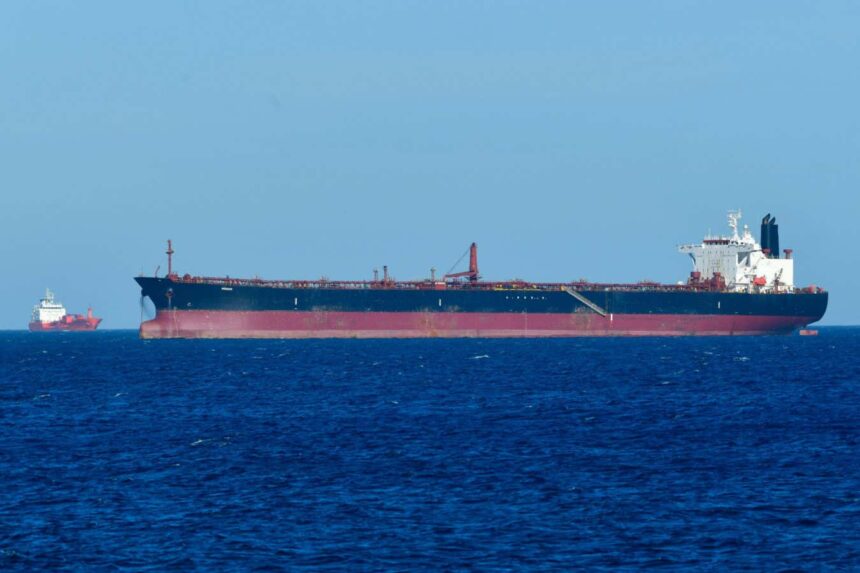
The vessel Merope anchored in the bay of Ceuta, Spain, after having carried out oil transfer operations in international waters, 14 March 2023
Antonio Sempere/Associated Press/Alamy
Artificial intelligence can spot stealthy cargo transfers between “dark ships”, vessels that have switched off their identification transponders. This could make it much easier to track the shadow fleet secretly transferring crude oil in defiance of international sanctions.
Such ship-to-ship transfers at sea have skyrocketed since Russia’s full-scale invasion of Ukraine spurred the European Union to ban the import of Russian crude oil. Although the G7 countries and allies do allow member countries’ ship operators and insurance services to transport some Russian oil, they have capped the maximum price to reduce profits for Russia.
“Under normal pre-war circumstances, there were very few dark ship-to-ship transfers,” says Ollie Ballinger at University College London. But the sanctions and price caps created more motivation for oil smugglers, and Ballinger used AI to prove it. His AI-powered search of satellite images revealed more than 400 dark ship-to-ship transfers that took place in the Kerch Strait near Ukraine and Russia between 2022 and September 2023.
“It’s very difficult for humans to search large areas for small things, like a needle in a haystack sort of problem,” says Ballinger. “But obviously deep learning [AI] is really good for exactly that sort of thing.”
Ballinger started by finding legitimate ship-to-ship transfers that took place in the Kerch Strait. To do so, he used public Automatic Identification System (AIS) data, which ships on legitimate business are supposed to broadcast constantly. AIS data includes vessel identification, GPS coordinates and additional information about the ship dimensions and type. Ballinger deployed an algorithm that used this information to find any two identifiable ships that spent more than 2 hours within 500 metres of each other without actively moving, then flag them as examples of ship-to-ship transfers.
Second, he collected daily images of the Kerch Strait captured by the Earth-imaging company Planet’s satellite constellations, which can take pictures with a resolution of 3 metres per pixel. By combining known locations and timings of ship-to-ship transfers with the matching satellite imagery, he created a dataset to train a custom AI program based on the publicly available YOLO object detection model.
The fully trained AI can spot ship-to-ship transfers solely from scrutinising satellite imagery, even if one or both partners are dark ships that do not broadcast AIS data. It is capable of identifying four different types of ships – including smaller general cargo or bulk carrier ships and large or very large oil tankers – and transfers involving either dry cargo or liquids such as some fuels. It can also search the equivalent of 115 square kilometres per second while finding the most relevant results 97 per cent of the time. As one example, Ballinger used this method to track possible transfers between a known Russian oil tanker named the Vladimir Monomakh and various dark ships.
This AI method could help track down the hidden owners behind the individual ships in the shadow fleet that consists primarily of older vessels sailing without standard Western-backed insurance, says Elisabeth Braw at the Atlantic Council, a think tank based in Washington DC. More than 1400 such dark ships are regularly moving cargo to and from sanctioned countries such as Russia, Iran, Venezuela and North Korea, according to the UK-based analytics company Windward.
“You have to constantly try to verify what these vessels are that you suspect are shadow vessels, and so there’s a lot of manual work involved,” says Braw. “If AI can help us detect them and detect their movements, all the better.”
Topics:

